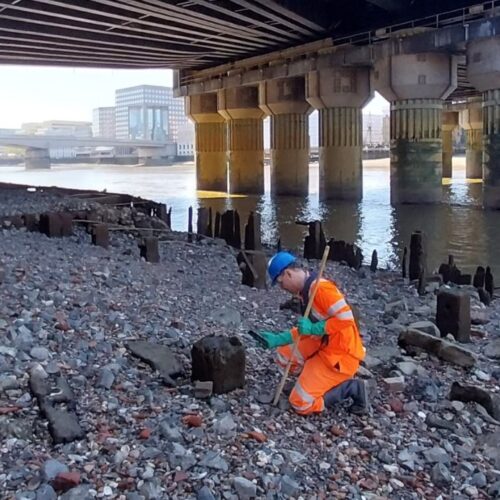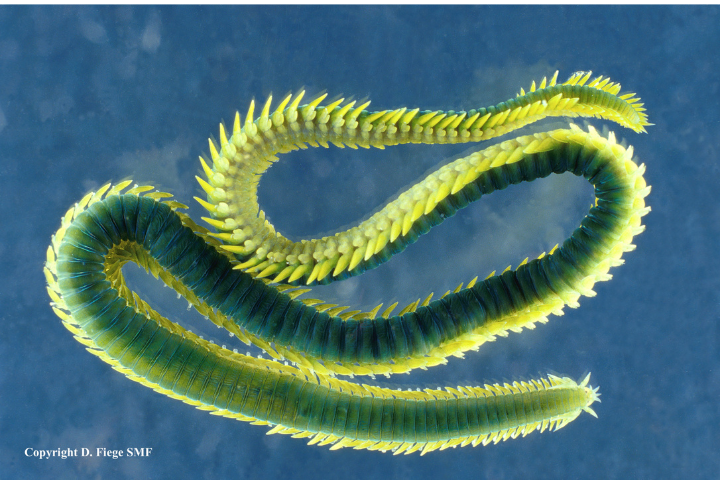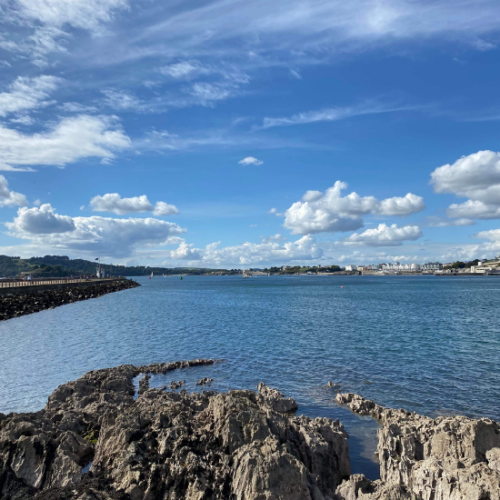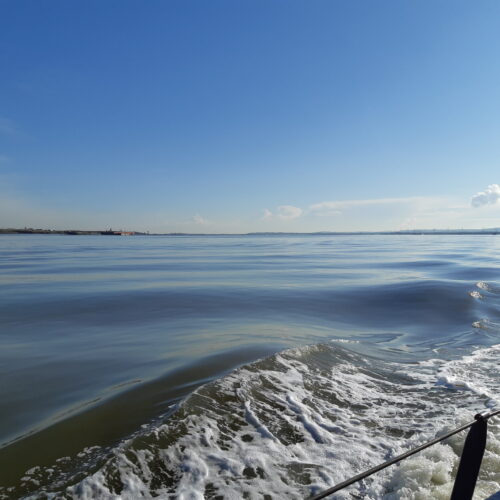Over 70% of the earth’s surface is covered by the ocean, with almost two thirds more than 200m deep. It’s therefore unsurprising that many useful resources can be found in the deep sea. Interest in the minerals and precious metals deposited here is growing, driven by increasing demand for high technology and green energy. But what might this mean for our oceans?
Minerals in the deep
Beyond the continental shelf, hidden beneath the sea surface, slopes descend to depths of 4,000 – 6,000 m, where the seafloor flattens into extensive areas of settled sediment, known as abyssal plains. Mid-ocean ridges divide the plains, with an array of geological features formed along the tectonic plate boundaries. These include seamounts, underwater volcanoes, hydrothermal vents, and deep trenches such as the Mariana Trench, which reaches almost 11,000 m deep in the northwest Pacific.
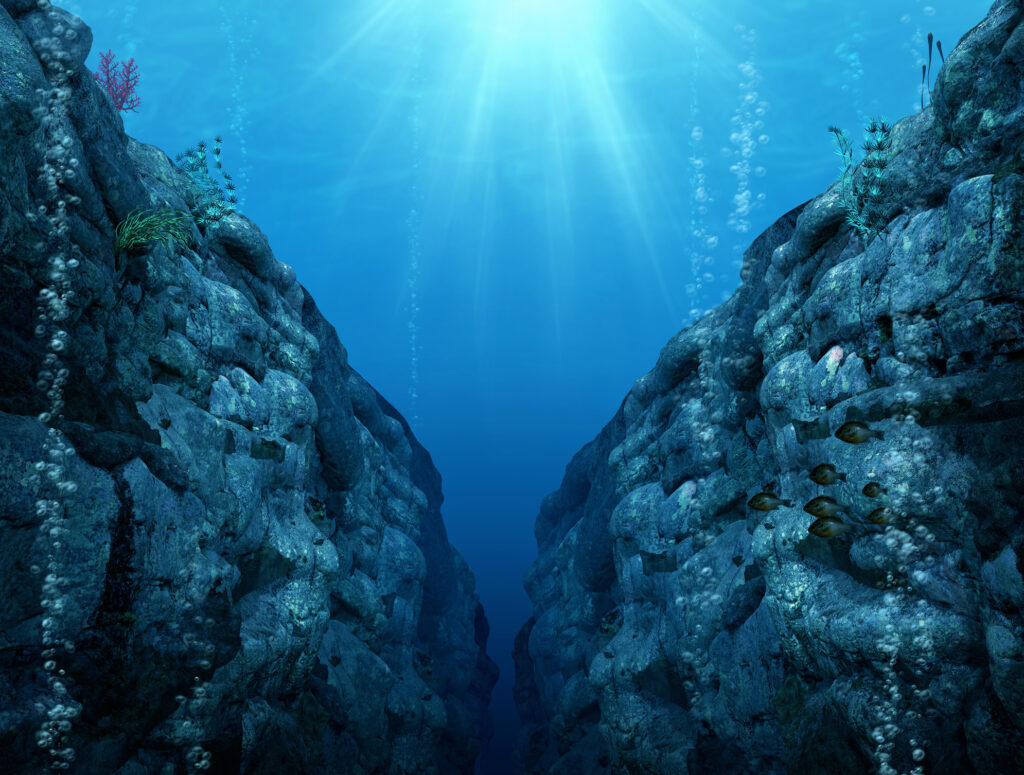
These areas can be rich in minerals. At hydrothermal vents, massive sulphide deposits can be found, containing copper, zinc, lead, arsenic, cobalt, silver, gold and other metals. Around seamounts, ridges, and other areas where prevailing currents prevent deposition of unconsolidated sediments, metals and other elements precipitate from the seawater. This has formed cobalt-rich ferromanganese crusts, which can be 25 cm thick. Metals also precipitate from the seawater in the abyssal plains, forming polymetallic nodules typically 5 to 10 cm in diameter. They form around small pieces of debris, such as shell fragments or fossilised bone and, like the ferromanganese crusts, are composed mainly of iron and manganese hydroxides, with other metals such as cobalt, copper and nickel, plus traces of rare earth elements [1].
Although growth of the polymetallic crusts and nodules is very slow, at only a few millimetres every million years, the deposits are now numerous. The Clarion-Clipperton Zone (CCZ), located between Mexico and Hawaii, is particularly rich in nodules. It is estimated that in this zone, there is six times more cobalt and three times more nickel than in known land-based reserves [2]. Similar estimates have been made for ferromanganese crusts on central Pacific seamounts thought to contain four times the cobalt found on land [1].
The demand
These deposits are not new discoveries. Polymetallic nodules were first discovered during the 1870s and the potential for mining them has been recognised since the 1960s. But only now is deep sea mining close to being economically viable; not only has mining technology advanced, but metal prices are also rising [3]. Contributing to this is the effort to move towards decarbonisation. Green technologies are reliant on precious metals, with renewable energy plants, electric cars and batteries requiring large quantities of metals such as copper, manganese, nickel, and cobalt. To meet the Paris Agreement’s goal of limiting global warming to below 2°C, it has been estimated that the annual demand for cobalt from green energy technology in 2050 will be 460% of cobalt production in 2018 [4]. Current terrestrial mining practises have been called into question, with cobalt production having been described as the dirty side of clean energy. Most of the world’s cobalt comes from the Democratic Republic of Congo and mines here have been linked to child labour and unsafe working conditions [2].
Deep sea mining
An injection of lots more of these rare earth elements is required to meet demand, and sights have been set on the deep sea to provide them. However, extracting minerals from the deep sea is a difficult task. Extraction technology must function in low temperatures, under extreme pressures, and with no natural light. Mining companies have focused their research on polymetallic nodules, considered to be the easiest mineral source to extract from the deep. Mining systems would require large surface ships or mining platforms where materials are collected. The Continuous-Line Bucket system, which scoops nodules from the seafloor on a conveyor-belt like system, and the Hydraulic Suction system, which sucks the lumps up via a long pipe, have both been used in extraction and developments to these systems have potential for use in full scale mining operations.
Deep sea conditions are not the only issue. In terms of regulating mining, the deep blue has fallen into a grey zone. Some countries, such as Japan, have deep sea mineral deposits in their exclusive economic zones and can therefore form their own regulations. However, most of the seabed below 200 m is in international waters, meaning it is governed by the United Nations Convention on the Law of the Sea (UNCLOS). To regulate activities in areas beyond national jurisdiction, the UN established the International Seabed Authority (ISA).
The ISA has issued regulations on prospecting and exploration for deep sea mineral deposits and a total of 31 15-year exploration contracts have now been issued. 17 of these licences are for exploration for polymetallic nodules in the CCZ [5]. However, regulations on exploitation are still in development. ISA had agreed to finalise these regulations by 2020 but Covid-19 has caused delays. In June 2021, the Pacific Island State of Nauru activated a subclause of UNCLOS, designed to be used if a country deems progress as too slow. This means that the ISA now has only 2 years to finalise the exploitation framework to ensure Nauru do not commence unregulated mining activities. Despite this deadline, the ISA are confident that, given the approval process in place, commercial mining is unlikely to begin before 2026 [6].
Political and environmental concerns
The growing interest in deep sea mining has had huge political implications. China aims to lead in the production of batteries, which relies on a steady supply of rare earth elements. To control this market and strengthen its supply, China is attempting to guarantee its access to deep sea resources. The South China Sea contains many polymetallic nodules and, in 2021, Chinese vessels moved to claim large swaths of international water as its territory. It’s likely that tensions will continue to rise as deep-sea mining advances [7].
Most concerns are environmental. Knowledge of deep-sea ecosystems and fauna is limited but current research shows that these areas are extremely diverse, with many endemic species that are restricted to these deep habitats. Populations vary over relatively small distances, and fauna of the abyssal plains have been shown to rely on the polymetallic nodules; their hard surfaces are critical attachment points for animals including deep-sea anemones, sponges, and corals. Octopuses have also recently been found to lay eggs in sponges attached to nodules [2]. The disturbance caused by deep-sea mining will alter deep-sea habitats, with predicted loss of species and fragmentation of ecosystem structure and function. Slow growth rates in the deep add to the issue, as any recovery from mining activities could take centuries. In addition to direct disturbance to the seabed, sediment plumes from the mineral extraction and disposal of tailings are concerning. The deposition of fine particles may smother fauna and harm filter-feeding species. Pollution is an additional environmental consideration. The noise, vibrations and light pollution caused by mining, as well as the risk of fuel spills, will require strict controls on mining activity and equipment [1]. There are also worries that climate regulation and nutrient cycling may be disrupted, as well as the long-term storage of carbon in ocean sediment [8].
Mitigation strategies, such as establishing protected area networks, could be used to ensure areas of the sea floor remain undisturbed, but this would require a thorough understanding of both the mined and proposed conservation areas to preserve ecosystems successfully [1]. The deep is home to fauna which is rarely encountered and poorly described and undoubtedly supports many so far undiscovered species. The unknown distribution and vulnerability of these fauna makes assessments of deep-sea mining impacts incredibly difficult. We can only hope to protect the ocean if we have a sufficient knowledge base to start with (the principle behind the Decade of Ocean Science for Sustainable Development).
It is sadly predictable that polymetallic nodule mining is most favoured due to its relative ease and scalability but is also set to be the most environmentally devastating, due to the large areas that will be mined for the small surface nodules. Mining of polymetallic nodules, massive sulphide deposits and cobalt-rich ferromanganese crusts will each employ different techniques, and will occur in different deep-sea environments, therefore will each have different environmental impacts which will need to be assessed separately.
The analyses required to generate baseline data for these assessments on a commercial scale is challenging to resource, due to the lack of marine labs with adequate expertise. At Thomson, our marine team are experienced in deep-sea macrobenthic identification, working on samples collected from up to 3,000 m depth. Our familiarity with the rarely seen fauna of the deep sea means we have even described new species.
Due to the significant amount of research still required, there are growing calls for a moratorium on all deep-sea mining activities. Support includes the European Parliament, as well as many scientists and conservationists including David Attenborough and the World Wildlife Fund. It’s argued that a 10-year moratorium is needed to ensure regulations are not made in haste and to allow time for the deep-sea ecosystems and potential impacts of mining to be further investigated. Supporters suggest this time would also allow metal recycling and alternative green technologies to be further developed, which could reduce the need to mine for these metal deposits [6, 8].
It’s clear that a better understanding of the deep sea is necessary to guide the next steps in deep-sea mining. However, even with a 10-year moratorium, there will still be gaps in our knowledge and it will be impossible to have a good handle on all the possible impacts before commercial deep-sea mining begins. Sadly, we’ll likely have to learn from mistakes as we go, to minimise future environmental damage.
References
[1] Cuyvers, L., Berry, W., Gjerde, K., Thiele, T. and Wilhem, C. (2018). Deep seabed mining: a rising environmental challenge. Gland, Switzerland: IUCN and Gallifrey Foundation. x + 74pp.
[2] McKie, R. (2021) Is deep-sea mining a cure for the climate crisis or a curse?, The Guardian, [Online] Available at: https://www.theguardian.com/world/2021/aug/29/is-deep-sea-mining-a-cure-for-the-climate-crisis-or-a-curse(Accessed 04/01/2022)
[3] McNish, J. (2017) Deep-sea mining plans need a better grasp of ocean floor ecosystems, Natural History Museum [Online] Available at: https://www.nhm.ac.uk/discover/news/2017/october/deep-sea-mining-plans-need-a-better-grasp-of-ocean-floor-ecosyst.html?gclid=EAIaIQobChMIkZmmt6TA8wIVCwB7Ch1VQgYVEAAYAiAAEgL5QfD_BwE (Accessed 04/01/2022)
[4] Kirsten Hund, K., La Porta, D., Fabregas, T.P., Laing, T., Drexhage, J. (2021) Minerals for Climate Action: The Mineral Intensity of the Clean Energy Transition, The World Bank, [Online] Available at: https://pubdocs.worldbank.org/en/961711588875536384/Minerals-for-Climate-Action-The-Mineral-Intensity-of-the-Clean-Energy-Transition.pdf (Accessed 04/01/2022)
[5] International Seabed Authority (2021) Exploration Contracts, International Seabed Authority (isa.org.jm) [Online] Available at: https://www.isa.org.jm/index.php/exploration-contracts (Accessed 4 January 2022).
[6] Shukman, D. (2021) Deep sea mining may be step closer to reality, BBC News, [Online] Available at: https://www.bbc.co.uk/news/science-environment-57687129 (Accessed 04/01/2022)
[7] BBC (2020) South China Sea dispute: China’s pursuit of resources ‘unlawful’, says US, [Online] Available at: https://www.bbc.co.uk/news/world-us-canada-53397673 (Accessed 04/01/2022)
[8] Scales, H. (2021) We have just two years to stop deep-sea mining from going ahead, New Scientist Magazine issue 3344, [Online] Available at: https://www.newscientist.com/article/mg25133442-800-we-have-just-two-years-to-stop-deep-sea-mining-from-going-ahead/#ixzz78udecruY (Accessed 04/01/2022)



